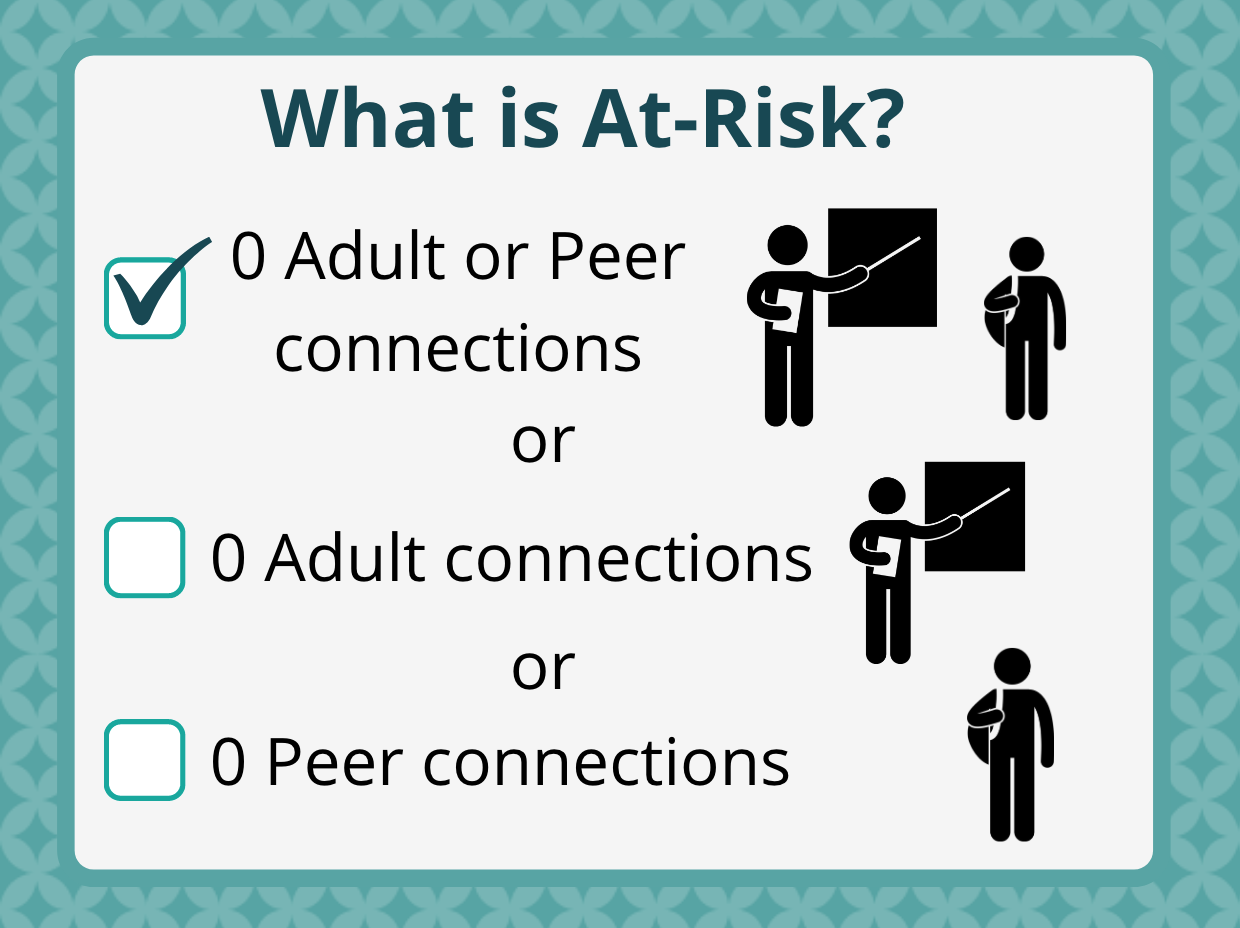2. About the Connections Screener
2.3. Use of results (connecting with students)
Data is only useful if you do something with it. When analyzing, determine which students are most at-risk. Traditionally, the Connections Screener has used the following:

Students who have not identified adult or peer connections are considered most at-risk. Other students considered at-risk are those who have no adult connections (but do have peer connections) or have no peer connections (but do have adult connections). As your team develops follow-up, next steps and interventions, looking at students in these categories can assist with identifying exactly what you will do. Students with similar needs may be grouped together. A real-life example that occurred at BHS was a girls lunch group that was created and supported by the school psychologist for several girls who reported no peer connections. Even after the group support ended, the girls continued to eat together at lunch. Other ideas may be:
- Students with no adult connections may be candidates for the evidence-based intervention Check and Connect.
- Students with no adult connections may be considered for mentorship programs.
- For a student who did not identify any adult connections, but a staff member identified that student, consider ways the staff member can reach out to that student in meaningful ways.
- Students with no peer connections may be considered for newly formed school groups or activities and supported by staff.
- Follow up on Early Warning Indicators for students considered at-risk to determine whether attendance or academics is also a factor to be addressed.
- If you enter demographic about your students you may also use that information to determine level of risk, triangulate data and look deeper at connections among subgroups in your building (e.g., differently abled, multilingual learners, vulnerable populations, etc.)
Brainstorm with your team for other ideas. Schools who were part of past Connections Project cohorts used their data in a variety of ways, including changing how their advisories were assigned (keeping students with the same advisors for more than one year to strengthen relationships) and structuring advisories to include relationship-building activities.
